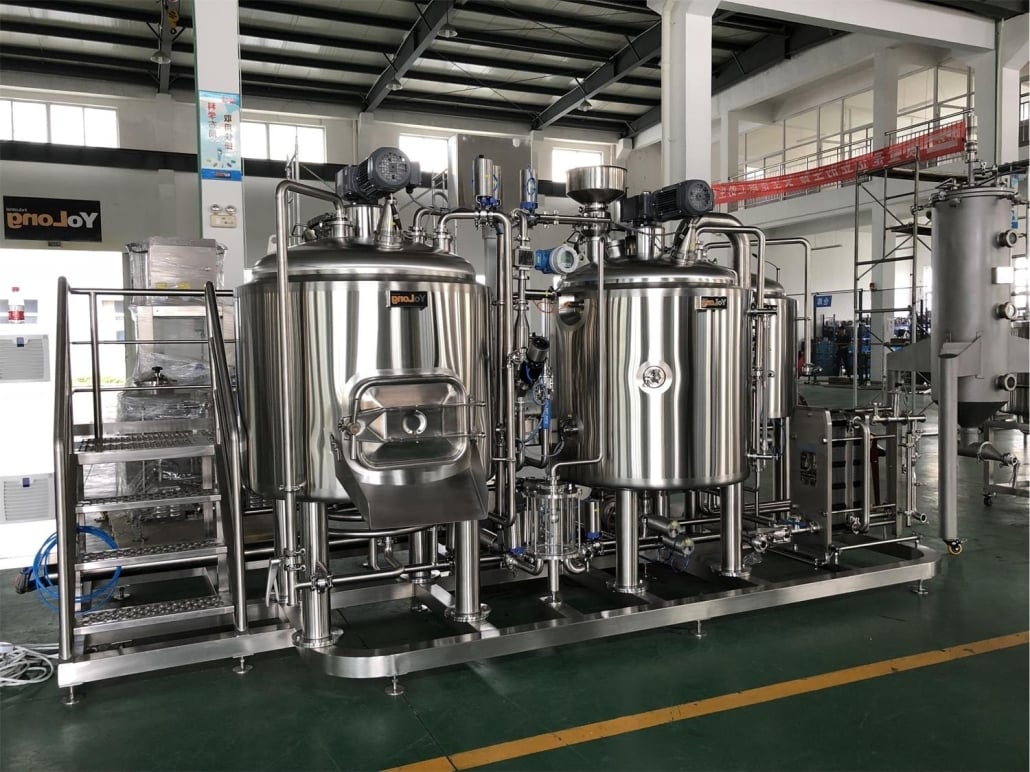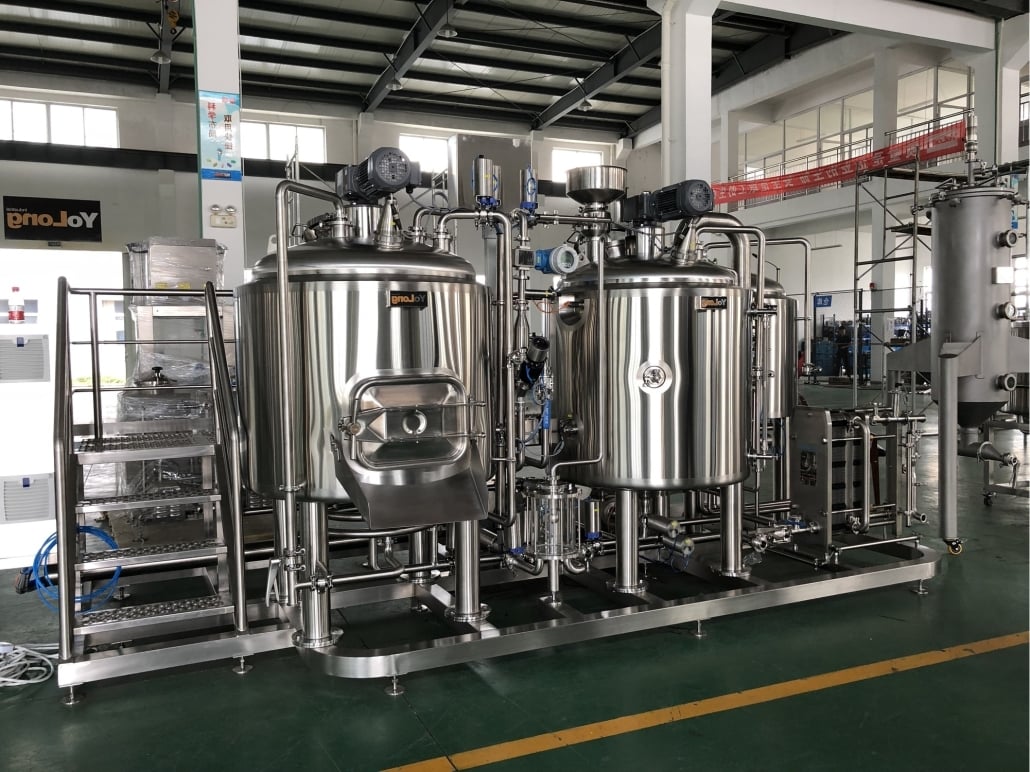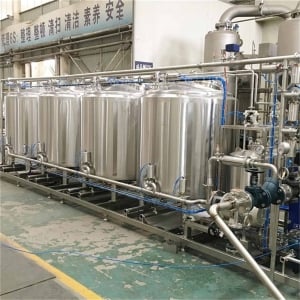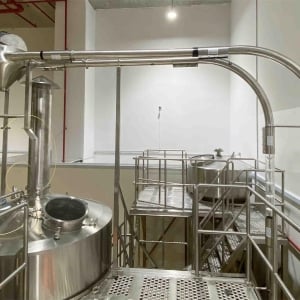Different Types of Stainless Steel Fermentation Tanks
The heart of any fermentation process, from brewing your favorite craft beer to cultivating kombucha for a gut health boost, lies in the fermentation tank. While various materials can be used for these vessels, stainless steel reigns supreme due to its impeccable durability, sanitation ease, and temperature control capabilities. But within the realm of stainless steel fermenters, a diverse landscape of options awaits, each catering to specific fermentation needs and preferences.
This comprehensive guide delves into the intricacies of different types of stainless steel fermentation tanks, equipping you with the knowledge to select the perfect vessel for your unique fermentation journey. Buckle up, fermentation enthusiasts, as we embark on a deep dive into the world of these essential tools!

Explanation of Cylindrical Fermenters: The Workhorses of Fermentation
Imagine a robust, upright cylinder, crafted from gleaming stainless steel. This, my friends, is a quintessential cylindrical fermenter, often referred to as a horizontal fermenter due to its positioning. These workhorses of the fermentation world are renowned for their versatility and ease of use, making them a popular choice for both homebrewers and large-scale producers.
Key characteristics of cylindrical fermenters:
- Simple design: Featuring a cylindrical body with a flat top and bottom, these tanks offer unmatched simplicity in both construction and operation.
- Space-saving: Their compact footprint makes them ideal for maximizing production capacity in space-constrained environments.
- Cost-effective: Compared to other tank designs, cylindrical fermenters are generally more affordable due to their simpler construction.
- Mixing options: While some cylindrical tanks come equipped with internal mixing mechanisms, others rely on external pumps for agitation, offering you flexibility in mixing strategies.
Applications:
Cylindrical fermenters excel in diverse fermentation processes, including:
- Beer brewing: From ales and lagers to stouts and sours, cylindrical tanks are versatile workhorses for various beer styles.
- Winemaking: These tanks are suitable for fermenting various grape varieties and can also be used for secondary fermentation of sparkling wines.
- Cider production: The simple design of cylindrical tanks makes them well-suited for fermenting apple juice into delicious cider.
- Kombucha brewing: These tanks offer a clean and controlled environment for cultivating your favorite kombucha flavors.
However, cylindrical fermenters have their limitations:
- Sediment collection: The flat bottom can make it challenging to remove sediment efficiently, especially for processes with significant yeast or hop trub.
- Limited headspace management: Cylindrical tanks offer less control over headspace management compared to conical fermenters, which can be crucial for certain fermentation styles.
Explanation of Conical Fermenters: Designed for Efficient Sediment Removal
Picture a sleek cone standing tall on its pointed end, crafted from the same sturdy stainless steel. This is the essence of a conical fermenter, readily recognizable by its sloping sides that converge towards a cone-shaped bottom. This design isn’t just for aesthetics; it boasts functional advantages that make conical fermenters a popular choice for brewers and producers seeking optimal efficiency.
Key characteristics of conical fermenters:
- Efficient sediment removal: The sloping design facilitates the natural settling of sediment towards the conical bottom, allowing for easier removal during the fermentation process.
- Improved headspace management: The reduced headspace at the top of the cone minimizes exposure to oxygen, which can be detrimental to certain fermentation styles.
- Multiple ports: Conical tanks often come equipped with additional ports for sampling, dry hopping, and temperature control probes, offering greater operational flexibility.
Applications:
Conical fermenters are particularly well-suited for:
- Beer brewing: They are ideal for styles that produce significant sediment, such as lagers, pilsners, and IPAs, where efficient sediment removal is crucial.
- Winemaking: These tanks are used for primary and secondary fermentation of various wine styles, including red wines that benefit from sediment removal.
- Cider production: The conical design allows for easier separation of sediment from the finished cider.
While conical fermenters offer distinct advantages, they come with some considerations:
- Higher cost: Compared to cylindrical tanks, conical fermenters are generally more expensive due to their more complex design.
- Larger footprint: The sloping sides of conical tanks result in a larger footprint compared to cylindrical tanks of the same capacity, which can be a factor in space-constrained environments.
Explanation of Unitanks: The All-in-One Powerhouses
Imagine a single stainless steel vessel that combines the functionalities of multiple fermentation tanks, acting as a fermentation, conditioning, and serving vessel all rolled into one. This innovative concept is embodied in unitanks, also known as brite tanks or combi tanks.
Key characteristics of unitanks:
- Multifunctionality: Unitanks eliminate the need for separate fermentation and conditioning tanks, streamlining the process and reducing equipment costs.
- Space-saving: Their compact design makes them ideal for maximizing production capacity in limited spaces.
- Carbonation control: Unitanks are equipped with carbonation stones for precise control of carbon dioxide levels, crucial for carbonated beverages like beer and cider.
- Serving functionality: Some unitanks feature built-in serving features like carb lines and taps, allowing for direct serving from the tank without transferring the beverage.
Applications:
Unitanks are particularly well-suited for:
- Craft breweries: They offer a space-saving and cost-effective solution for breweries with limited space or resources.
- Cider production: The carbonation control feature makes unitanks ideal for producing sparkling cider.
- Kombucha brewing: These tanks can be used for fermentation, carbonation, and even serving kombucha on tap.
However, unitanks come with some limitations:
- Limited versatility: Compared to dedicated fermentation and conditioning tanks, unitanks offer less flexibility in terms of independent process control.
- Cleaning challenges: The multifunctionality can pose cleaning challenges as residual product from one stage can contaminate the next.
- Higher maintenance: The additional features of unitanks can require more maintenance and potential repairs compared to simpler tank designs.
Choosing the Right Stainless Steel Fermentation Tank: A Decision-Making Guide
Selecting the ideal stainless steel fermentation tank for your needs depends on various factors, including:
- Type of fermentation: Different fermentation processes have varying needs. Consider the sediment production and headspace management requirements of your specific product.
- Production volume: Choose a tank size that accommodates your desired batch size while leaving enough headspace for fermentation.
- Budget: Stainless steel tanks come in a range of prices. Compare costs of different options while considering your long-term needs.
- Available space: Measure your available space and ensure the chosen tank’s footprint fits comfortably.
- Desired features: Consider if you require additional features like built-in cooling jackets, carbonation stones, or serving functionalities.
Remember, there’s no one-size-fits-all solution. By carefully evaluating your needs and preferences, you can select the perfect stainless steel fermentation tank to elevate your fermentation journey and unlock the full potential of your craft.

FAQs
Q: What is the most common type of stainless steel fermentation tank?
A: Cylindrical fermenters are the most widely used due to their simplicity, affordability, and versatility.
Q: Are conical fermenters better than cylindrical ones?
A: It depends on your needs. Conical tanks offer efficient sediment removal and headspace management but come at a higher cost and require more space.
Q: Can I use a unitank for all fermentation stages?
A: While unitanks offer multifunctionality, they may not be suitable for all processes. Consider the potential limitations in terms of flexibility and cleaning compared to dedicated tanks.
Q: What are the benefits of using stainless steel for fermentation tanks?
A: Stainless steel is a popular choice due to its durability, ease of cleaning, sanitation properties, and temperature control capabilities.
Q: How do I clean a stainless steel fermentation tank?
A: Proper cleaning procedures are crucial to prevent contamination. Consult manufacturer instructions for specific cleaning protocols and recommended cleaning solutions.













